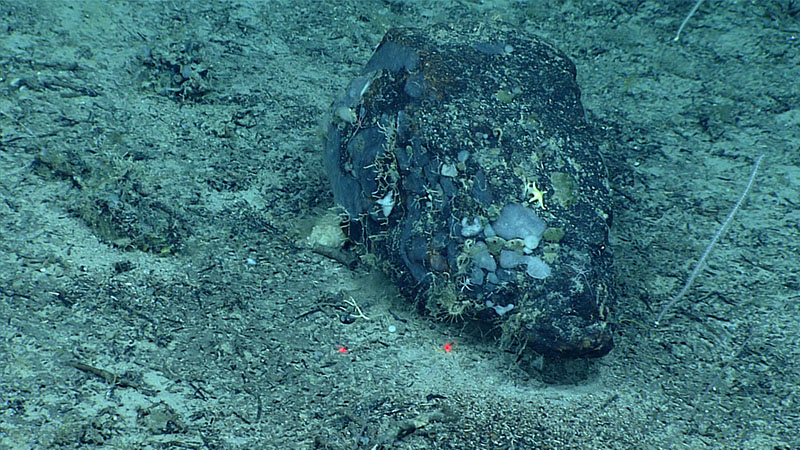

Glacial dropstones of various sizes were observed sporadically throughout Dive 11 of the 2021 North Atlantic Stepping Stones expedition. These rocks likely were incorporated into glaciers during the Last Glacial Maximum, approximately 20,000 years ago, and dropped to the seafloor as floating ice sheets began to melt and lose their loads. This particular dropstone lends its dark appearance to a ferromanganese coating, which, given the slow accumulation rate of the coating, suggests the rock has been in this area for quite some time. This dropstone is also providing habitat for various organisms such as sea stars and sponges.